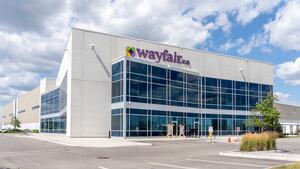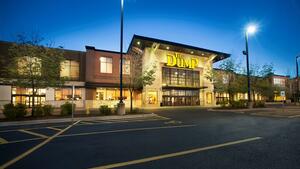It’s no longer news to the interior design trade: The global supply chain is a mess. But among the historically long delays and backlogs, there came some brighter headlines last week—lumber prices are falling.
Over the course of the last year, the price of softwood lumber—the type most often used by homebuilders for framing—has been steadily rising, owing to a multitude of pandemic-era factors. The clearest culprit is the boom in home renovations and building, whether it’s an ADU in the backyard or a full-blown new build. By early May, the price hit an all-time high of $1,711.20 per thousand board feet, the standard metric for lumber (compared with $412.53 on June 21 of last year, and $344.24 at the start of 2019). To put this in perspective: New homes cost an average of $34,000 more as a result of the lumber market, reports Forbes.
This week, however, the market opened at a price of $897.90 per thousand board feet, down more than 45 percent from May’s peak. “The rapid decline suggests a bubble that has burst, and the question is how low lumber prices will fall,” writes commodities reporter Ryan Dezember for The Wall Street Journal. If you’re asking John Dupra, co-founder of Rochester, New York–based hardwood flooring company Revel Woods, there is still a ways to go before we return to normal: “Softwood prices are starting to break—I would not say ‘plummeting,’ but I would say it’s more like a fever breaking.”
Many in the lumber industry felt the fall was inevitable, but examining the trend over the past year and a half, the price of lumber was an indicator of the market’s overall volatility. Like many other businesses, when the pandemic set in, mills shut down and dealers sold their inventories. It wasn’t long after lockdowns eased that the housing boom arrived—with nowhere to go, Americans collectively felt a vigorous interest in the comforts of home, and many channeled that interest into remodeling projects, while others took advantage of low mortgage rates in suburbs and yet others began building outdoor spaces. In a flash, plywood and lumber were snatched up off the shelves, adding fuel to a frenzied fire of demand in the U.S. By the time sawmills resumed operations, however, demand was so great that the supply couldn’t keep up—and as a result, prices jumped. Now that prices are on the decline, what does that mean for designers?
That depends on what kind of project they’re working on. The two main categories of lumber are softwoods and hardwoods. As a rule of thumb, softwood tends to mean a new build, while hardwood typically is used in remodels. And though there is increasing optimism in the lumber market, it’s important to note that analysts are focused on softwood.
“Softwood prices are starting to come down,” says Dupra. “Hardwood prices have not. But typically speaking, where softwood goes, hardwood follows, so it does bode well for the future on the hardwood side.” And while softwood is of more interest for those on Wall Street, design projects will be affected by the prices of both types. “We don’t see any evidence that [the price of hardwood] is falling,” says Don Finkell of Dalton, Georgia–based EF Floors & Design. “Hardwood prices go up and down more slowly, but we’ve seen the same, not as rapid, movement as softwood prices go up. We’ve seen a steady increase in hardwood prices over the last 18 months, and 18 months ago, we were probably at the bottom with fairly inexpensive pricing—most of it has gone up 50 percent or more.”
Even though the market is breathing a sigh of relief, designers likely won’t feel the change immediately. For those working on new builds, the delays will get shorter, and budgets will be able to stretch a bit further, leaving more dollars for the design side; for others specifying custom hardwood furniture and flooring, the skies have not yet cleared. On the market side, higher prices for raw materials have left analysts worried about inflation, reports Bloomberg, but the downward change in price means that supply is on the rise, and while the lumber industry is still far from business as usual, things are heading in the right direction.
Homepage image: ©Melena-Nsk/Adobe Stock






























